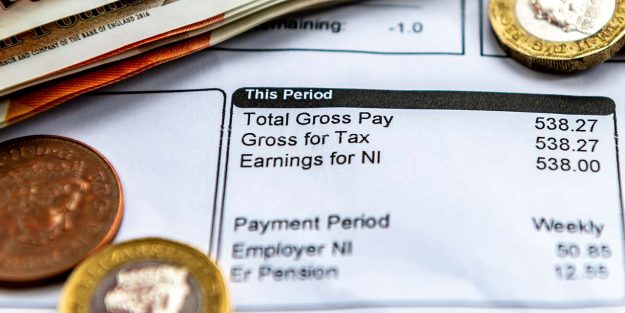When applying for a job, you want to show more than just knowledge and an abundance of skills to your future employers. You need to add a personal touch and the best way to do it is a well-written and engaging motivation letter.
But, what is a motivation letter? Is it the same as a cover letter? How to write one? We’ll address these questions and provide four examples you can use to present yourself in the best light.
What is a Motivation Letter?
A motivation letter, also called a motivational letter, is a succinct one-page document that outlines why you are the ideal candidate for a particular role, such as a job, educational program, internship or volunteer opportunity.
You’ll typically attach this letter to your CV when applying for various jobs or other opportunities.
It serves as a personal statement of your motivations and intentions. The focus is on showcasing your enthusiasm and commitment beyond what’s listed on your resume.
It is an opportunity to emphasize the personal elements that make you a standout candidate.
Motivation Letter vs. Cover Letter
While both motivation letters and cover letters serve the purpose of introducing yourself in a job application, there are some key differences between the two:
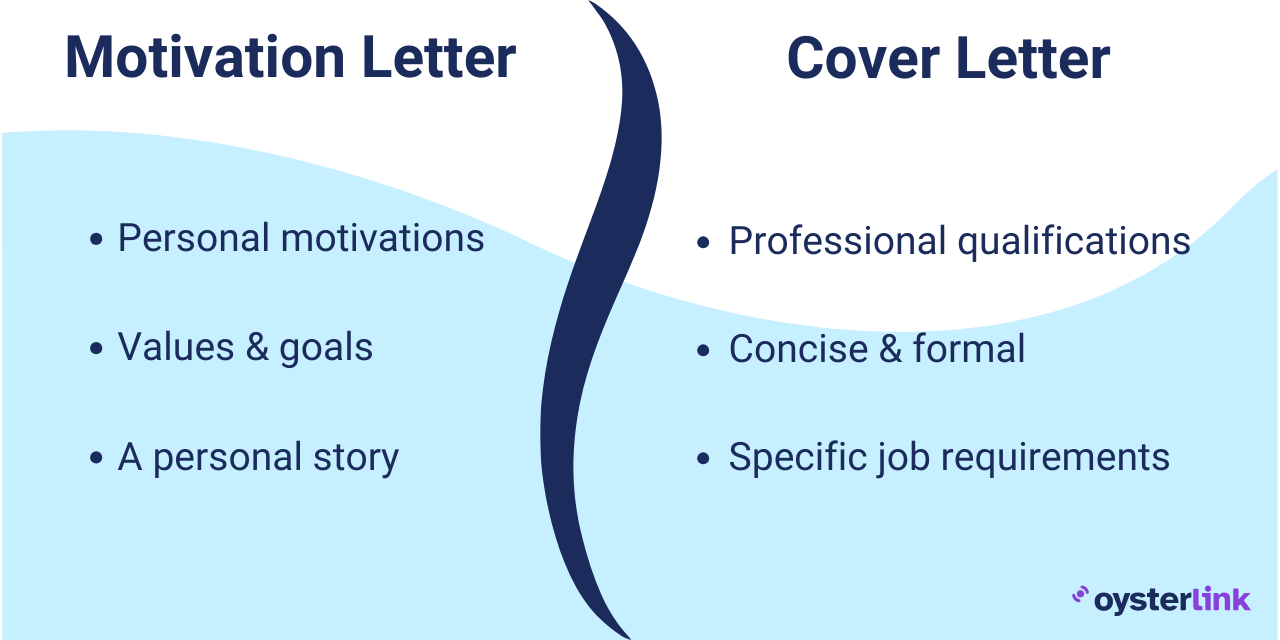
Motivation Letter:
- Focus on personal motivations
- Explores values and goals
- Provides a personal story
Cover Letter:
- Highlights professional qualifications
- Concise and formal
- Addresses specific job requirements
How to Write a Motivational Letter
Writing motivational letters that leave a positive impression should be well structured. This involves knowing what to include and what not to include in it.
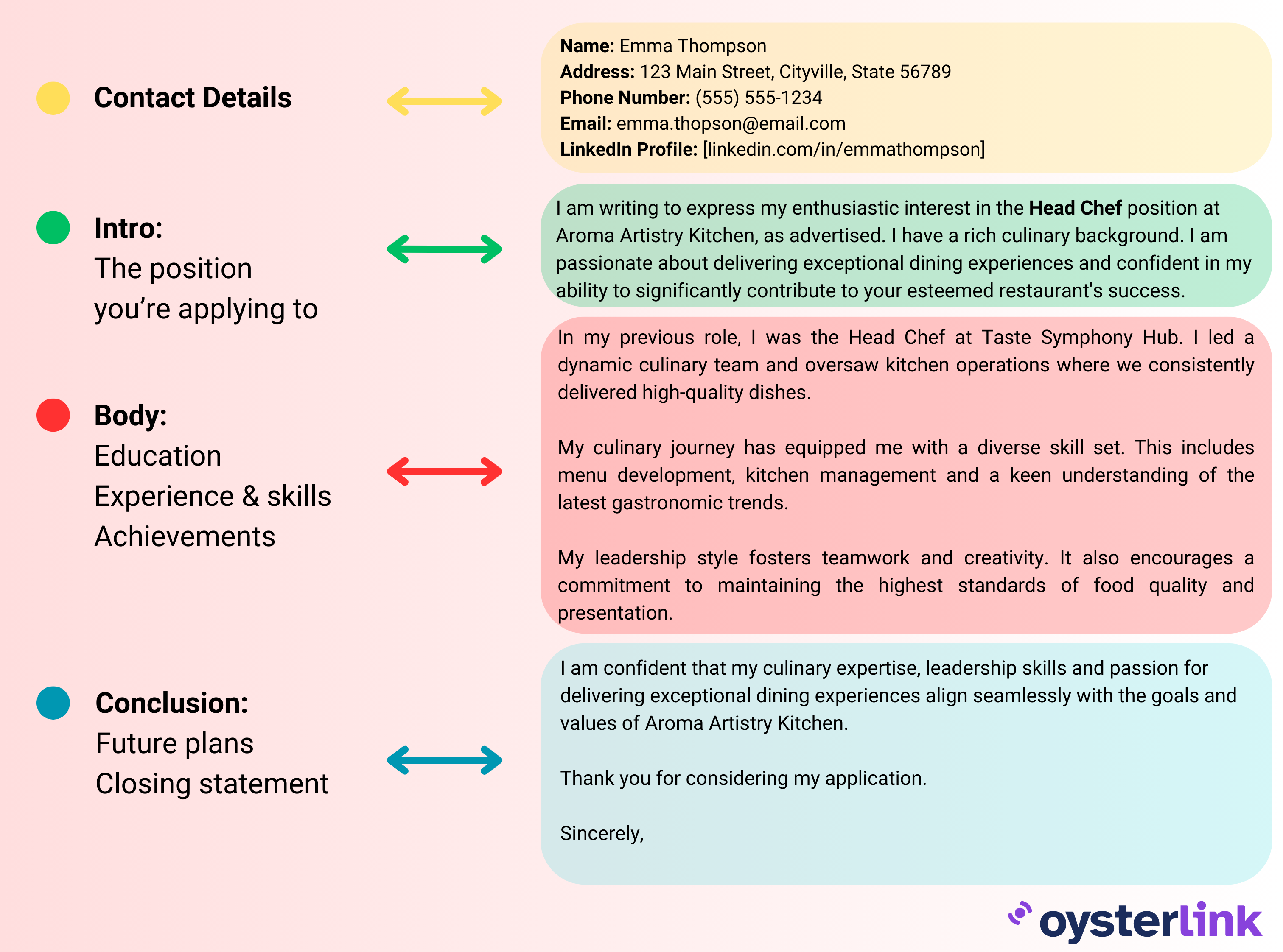
Let’s break down this process to reveal its essential elements:
- Contact details
- Introduction
- Body
- Conclusion
1. Contact Details
In this section, you will want to include the following information:
- Name
- Academic degree (if applicable)
- Address
- Telephone number
- Email address
- Links to relevant social accounts such as your LinkedIn profile
2. Introduction
Begin with a professional greeting and clearly state the purpose of your letter.
It’s best if you know the exact contact person/hiring manager you are talking to and address them by their name right from the start. This shows you’ve done your research and helps you establish a more personalized connection.
In essence, your introduction should answer the following questions:
- What position are you applying for?
- What fuels your interest in joining the team for this job?
- What are you bringing to the organization (your skills and qualities)?
- Why are you the right person for the job?
Use clear, concise language and focus on essential details only.
3. Body
The body of motivation letters is an extension of your introduction. It usually consists of two or three paragraphs.
The paragraphs convey your enthusiasm for the job and highlight your qualifications.
Why you want the job:
- Express your genuine interest in the position and the company
- Highlight specific aspects you like about the company, such as its values, mission or work culture
- Explain how the job aligns with your career goals and plans
What you can do:
- Showcase your skills and qualifications relevant to the job
- Provide real-life examples of past experiences and achievements
- Use metrics or specific details to add credibility to your statements
Passion and value proposition:
- Convey your passion for the role and the industry
- Discuss how your unique qualities and values align with the company’s mission
- Reinforce your commitment to contributing to the success and growth of the company
Remember to be concise, factual and persuasive. Use clear examples to illustrate your points and show why you are the perfect candidate for the job.
4. Conclusion
In the conclusion of your motivation letter, you want to summarize your key points. This is where you voice your gratitude and leave a positive final impression.
Include the following:
- Briefly recap why you are excited about the job and how it aligns with your career goals
- Thank the reader for considering your application
- Express appreciation for the chance to be part of the selection process
- Reaffirm your excitement about the opportunity and the prospect of contributing to the company’s success
- Politely invite the reader to contact you for further discussion or clarification
- Use a formal closing salutation such as “Sincerely” or “Best Regards”
- Sign off with your full name
Remember to keep this section brief and positive, leaving the reader with a favorable impression of your candidacy.
What Not to Include in Your Motivational Letter
When writing a motivation letter, there are common mistakes you should avoid.
Try to resist the urge to emphasize your weaknesses. While honesty is a valuable trait to have, the motivation letter is the opportunity to showcase your strengths.
Keep your language straightforward and concise. Avoid using fluff words or overly elaborate sentences.
Keep away from statements like “I feel extremely passionate.” Instead, mention a specific event or project you have been a part of. This showcases the genuine depth of your enthusiasm for a subject or field.
Apply the “So what?” rule. Ask yourself, ‘So what does this add to my candidacy?’ If the information doesn’t directly strengthen your case or highlight relevant skills, consider excluding it.
What is the Best Format of a Motivational Letter?
The best motivation letter is formatted in a professional manner. It should be well-organized and tailored to the specific job or program.
Here is a recommended motivation letter template you should follow:
Header
The header is reserved for your personal info, including:
- Your Name
- Your Address (Street, City, State, Zip Code)
- Email Address
- Phone Number
- Links to your relevant social accounts
Date
Don’t forget to include the correct date following the Month-Day-Year US format:
- “January 15, 2024”
Recipient’s Information
Include the recipient’s relevant information, such as:
- Recipient’s Name
- Recipient’s Title (if applicable)
- Company Name (if applicable)
- Address
Salutation
Start with a formal greeting, such as:
- “Dear [Mr./Ms.] [Last Name],”
“Esteemed [Mr./Ms.] [Last Name],”
Introduction
Here’s what you should write in your motivation letter intro:
- The position or program you are applying for
- A brief expression of your enthusiasm for the opportunity
Body
In the body part of your motivation letter, include the following:
- Explain why you are interested in the position or program.
- Emphasize your genuine passion and connection.
- Highlight relevant skills, experiences and achievements.
- Show how your values and goals align with those of the company or program.
Conclusion
The conclusion is where you should briefly summarize the whole purpose of your motivation letter. Here’s what to do:
- Summarize your main points
- Express gratitude for the opportunity
- Use a closing phrase such as “Sincerely” or “Thank you”
- Sign your full name at the bottom
Extra Tips
It is also important how your motivation letter looks at first glance. So, pay attention to the following features:
- Consistency: Maintain a consistent font and formatting throughout the letter
- Length: Keep it concise, ideally one page
- Structure: Divide the text into smaller blocks for better readability
4 Motivation Letter Examples
We will provide four examples to guide you through your application process. This will help you look at the motivation letter as a full picture.
1. An Example of a Motivation Letter for a University
Let’s say you need to write a motivation letter to apply for the University of Environmental Science, EcoSphere.
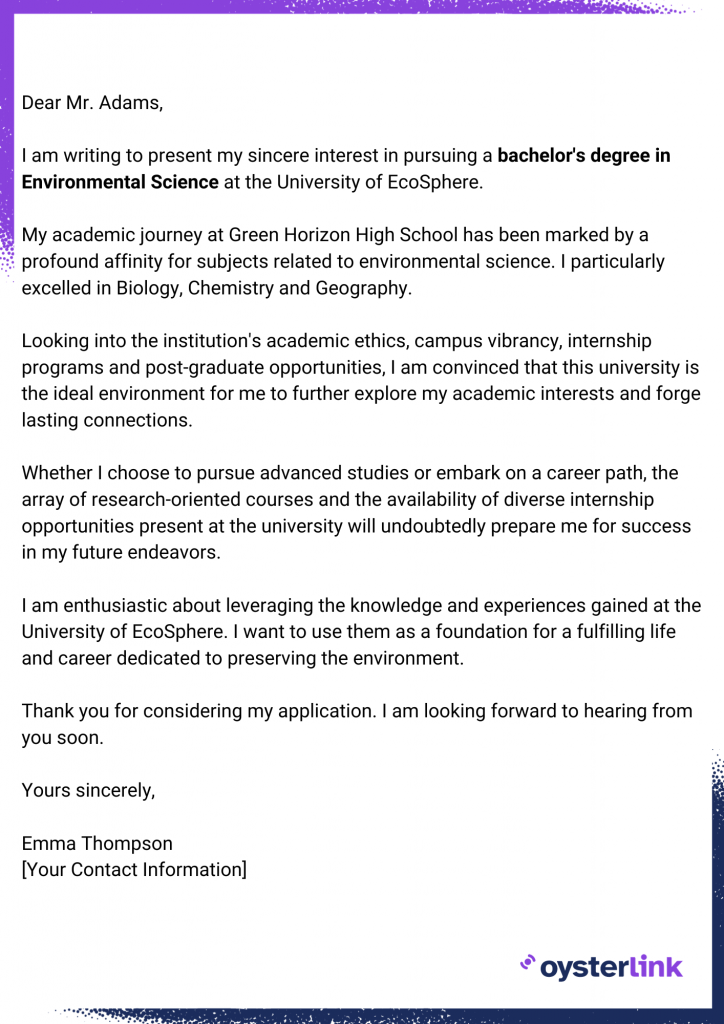
2. An Example of a Motivation Letter for a Scholarship
A motivation letter example when applying for a scholarship should look similar to this.
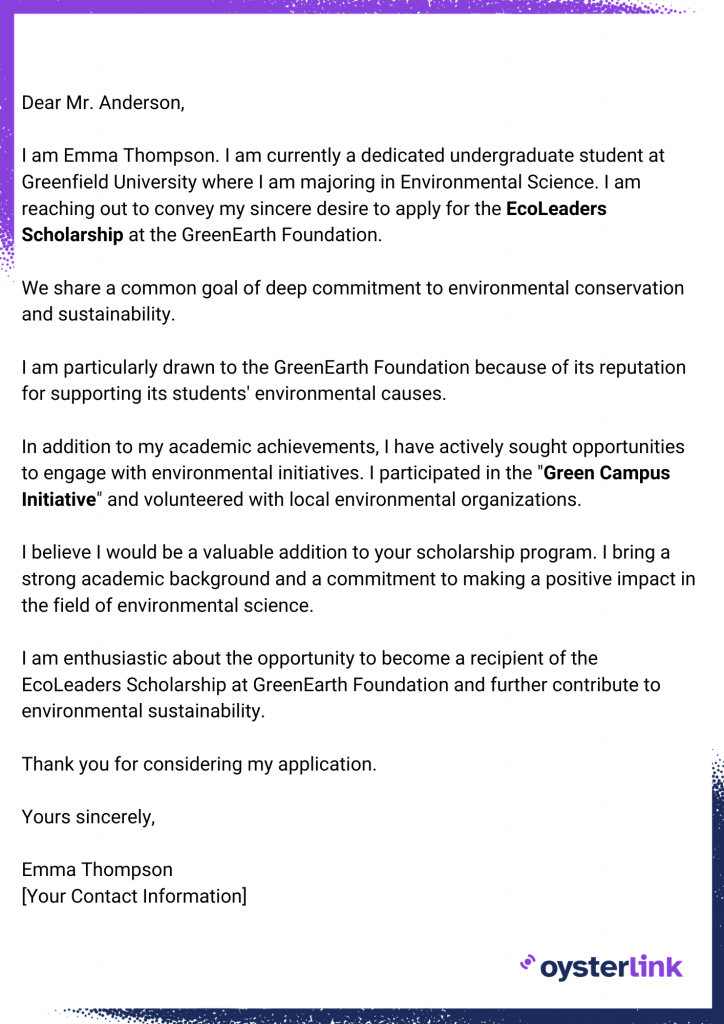
3. An Example of a Motivation Letter for an Internship
If applying for an internship, follow this sample motivation letter structure.
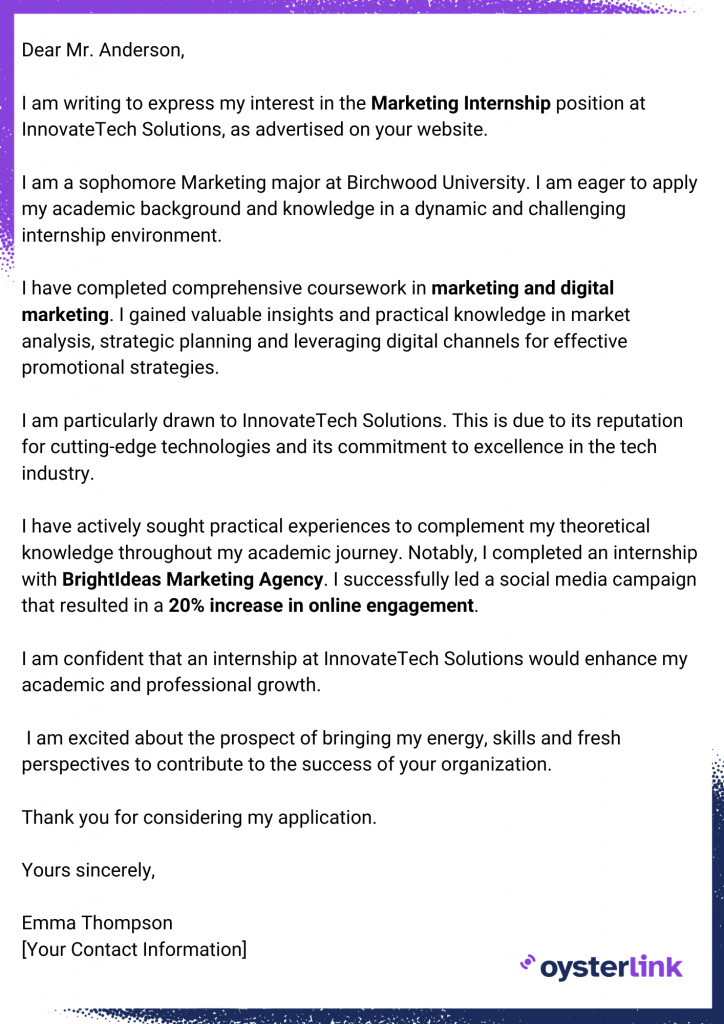
4. An Example of a Motivation Letter for a Job Application
Here is an example of a motivation letter you can use as a guide when applying for a, let’s say, restaurant job.
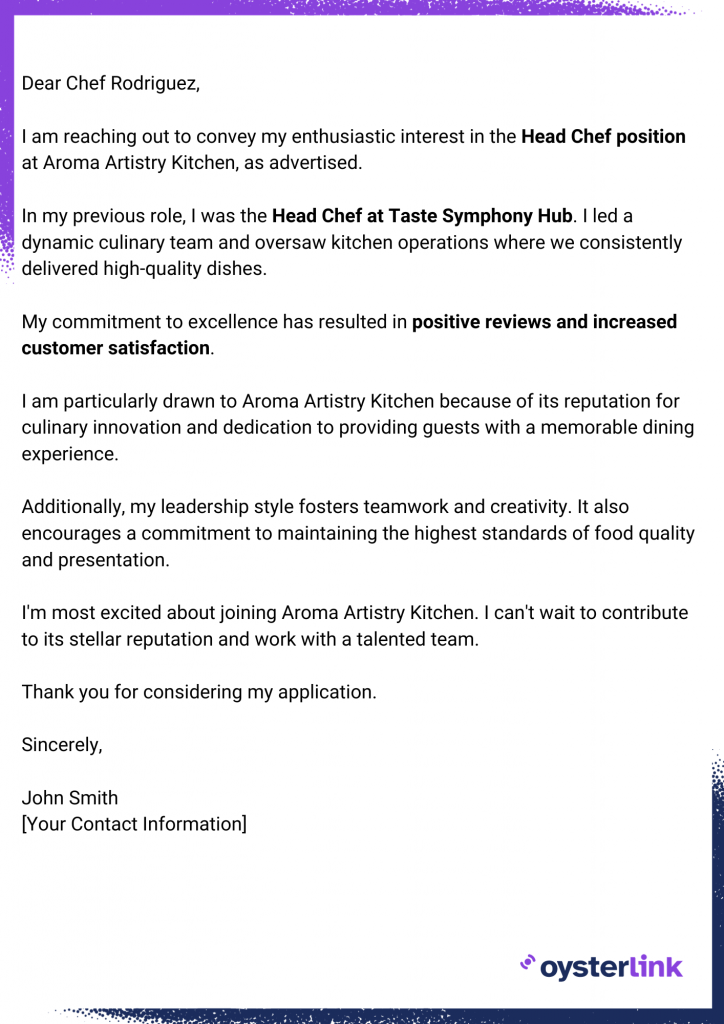
Key Takeaways
When you write a motivation letter, consider its purpose: revealing your personality and traits. Structure your motivation letters so they include your contact details, an introduction a body and a conclusion.
In the contact details section, provide essential information. Include your name, academic degree, address, phone number, email, and relevant social links. Start the introduction with a professional greeting. State your purpose and answer key questions briefly.
The body is an extension of your introduction. Your cover letter should consist of paragraphs expressing your genuine interest in the job. Showcase your skills and convey your passion and unique value proposition. Be concise, factual and persuasive.
Conclude your motivation letters by summarizing key points. Express gratitude and leave a positive final impression. Avoid emphasizing weaknesses, use straightforward language, and be specific about your passion.
For the format, ensure it is professional, well-organized and tailored to the specific job or academic program you’re applying for.
Keep the letter concise, ideally one page and maintain a consistent font and formatting throughout.
Frequently Asked Questions
Here are the answers to some of the most frequently asked questions about writing a motivation letter.
The motivational letter serves as a personalized narrative, allowing you to articulate not only your professional qualifications but also the underlying motivations and passions that drive your interest in a particular opportunity.
It goes beyond a traditional resume by providing insight into your character, values and unique attributes.
This document showcases not just what you can do, but also why you are genuinely enthusiastic and well-suited for the specific role, academic program or scholarship you are applying for.
When structuring the introduction of your motivational letter, commence with a formal and professional salutation, addressing the recipient appropriately.
Following this, concisely articulate the primary purpose of your letter, explicitly stating why you are reaching out.
It is crucial to immediately establish clarity by offering succinct responses to fundamental questions, such as specifying the position, program or opportunity you are applying for.
Next, state your motivation for applying and briefly outline the unique qualities and qualifications that make you a suitable candidate.
In the body of the motivation letter, provide the specifics of your application by expressing authentic enthusiasm for the opportunity. Communicate your genuine interest by highlighting aspects of the job, academic program or scholarship that resonate with your career goals or academic pursuits.
Substantiate your claims by showcasing concrete examples of your skills and qualifications, providing tangible evidence of your capabilities. Emphasize not only what you can do but also how your unique background, experiences and perspective contribute to your value proposition.
This section serves as the core of your letter, painting a comprehensive picture of why you are the ideal candidate or scholar for the position or program in question.
A good motivation letter should typically be concise, and ideally limited to one page. Keeping it succinct ensures that the reader can quickly grasp the key points without being overwhelmed by excessive information.
No. A cover letter is a formal document submitted alongside a resume or CV during a job application. It serves as an introduction to the applicant and complements the details provided in the resume.
The cover letter typically includes information about the applicant’s qualifications, skills and experiences relevant to the job. In contrast, a motivation letter is often used in academic or international contexts.
It delves into personal motivations, passions, and goals related to the opportunity.
In your motivation letter, consider highlighting your enthusiasm for learning. Include your transferable skills and relevant qualities.
They make you a strong candidate despite limited formal experience.
Emphasize your eagerness to contribute and willingness to undergo training. Also, mention any related achievements or experiences that showcase your potential and dedication.
In conclusion, summarize key qualifications and motivations to reinforce your candidacy. Express gratitude for the opportunity, and reaffirm your excitement about contributing.
Conclude with a formal closing salutation, such as “Sincerely” or “Best Regards,” followed by your full name, maintaining professionalism and leaving a positive and open-ended impression.







